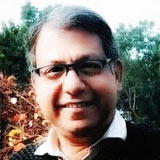Power of Museums: A Special celebration at Indian Museum
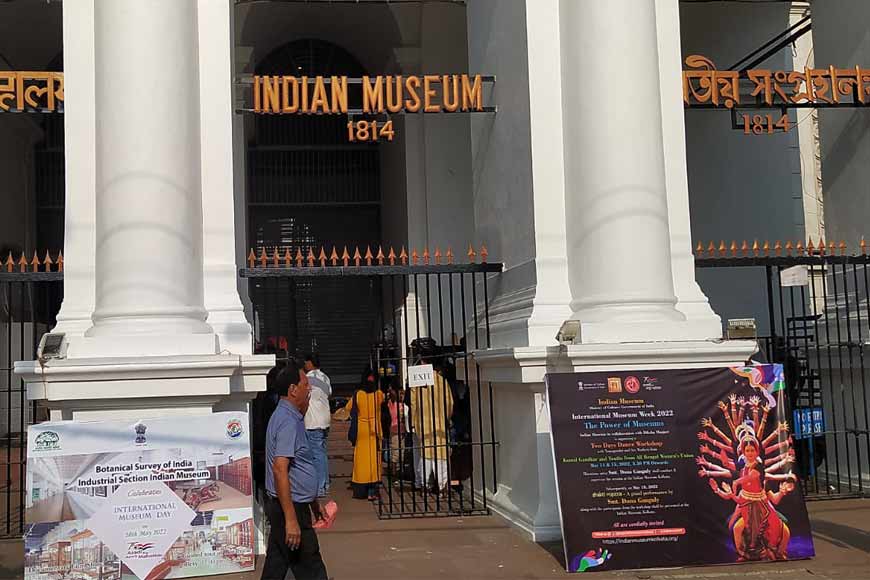
In this age of global cultural homogenization, museums have a great responsibility towards society and the world. Museums uphold our rich and glorious ethnographic heritage in the form of their collections which are primary evidences of our rich culture and they have the power to transform the world around us. Museums are not only the place for celebration of wonder but through their collections they build a social fabric among societies. The ethnographic collections in a museum help to relate people of every age with our flourished culture and indigenous knowledge. It also provides lifelong learning opportunities for all to build a better society.
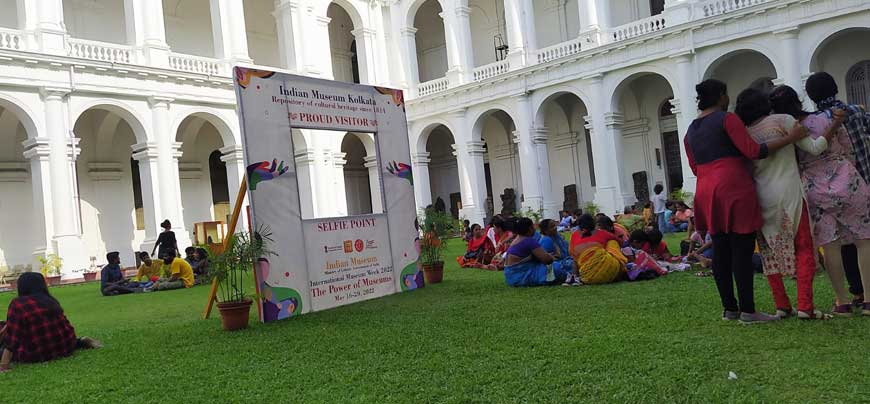 On the grounds of Indian Museum, Kolkata
On the grounds of Indian Museum, Kolkata
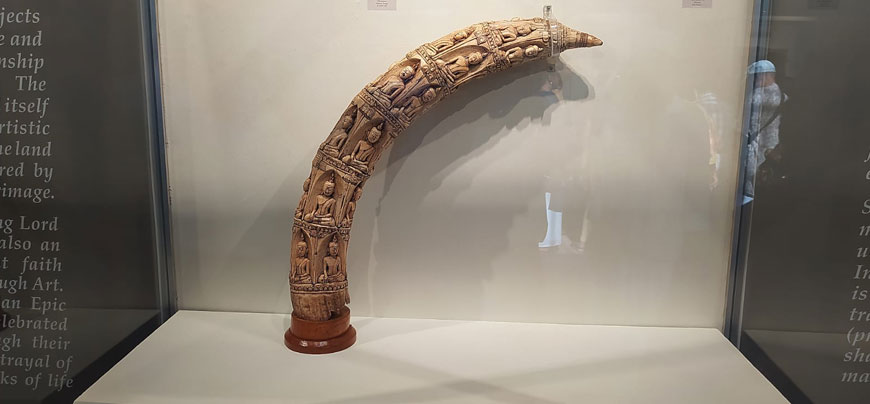 Ivory carving art
Ivory carving art
Indian Museum, one of the oldest museums of Asia, recently celebrated Museum Day and celebrations continued for a week. International Museum Day celebrates the pride and the Power of the Museums, and to generate awareness about the significant role of museums in community building and cultural exchange for the national and international cooperation, the Indian Museum, Kolkata, the home to one of the richly-curated collections of antiquities and artefacts illustrating the development of human culture in south Asia and beyond, brings forward some of its rare treasures from its proud repertoire.
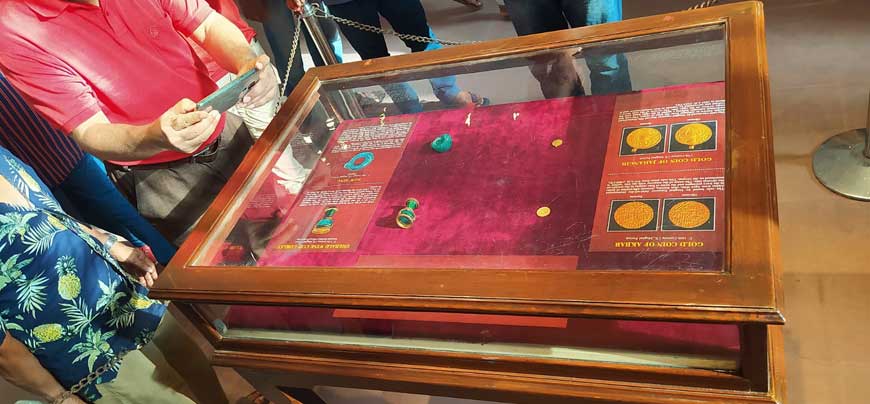 Gems and coins from Moghal treasure
Gems and coins from Moghal treasure
.jpg) Emerald wine cup, Bow ring and gold coin (Mughal-period)
Emerald wine cup, Bow ring and gold coin (Mughal-period)
The ongoing exhibition is featuring the earliest known Brahmi inscription from the site of undivided Bengal, dated back to c. 3rd century BCE; exquisite bronze images of Manasa and Vajra-Tara along with Copper-plate inscriptions of Sasanka and Vallalsen, followed by the gold coins issued by Emperor Akbar and Jahangir, and the extinguished artefact in the form of emerald wine cup and bow-ring of Shahjahan from the collection of its Archaeological Section. Several artefacts of anthropological importance like Dokhma or the Tower of Silence, the figure of a Konyak Naga warrior holding a trophy, Kapala, a human skull-pot decorated with bluestone and copper from Tibet are also featured.
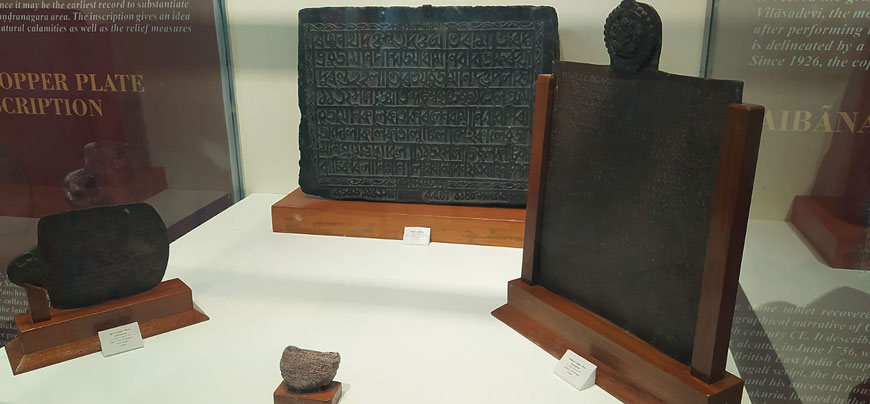 Plaque Inscription and stone inscription
Plaque Inscription and stone inscription
Major inscriptions include Mahasthangarh Plaque Inscription. Mahasthan, identified as the ancient city of Pandranagara, yields evidence of the earliest epigraphical evidence in undivided Bengal, a small limestone inscription, dated to 3rd century BCE. The inscription cites an official order, issued by galadana, to supply food grains ie, dhanya (paddy), and ganda (corns) to the Samvangiya people, and the storehouses needed to be stocked with these requisites in times of distress. The inscription gives an idea of the miseries probably caused by natural calamities as well as the relief measures taken by the authority. The Saibana Stone Inscription is a stone tablet recovered from the village of Saibana near Barasat. It is a biographical narrative of Chudamani Dutta, a resident of Pakuria in the early 18th century CE. It describes the details of Nawab Siraj-ud-Daullah’s conquest of Calcutta, in June 1756, when he seized Fort William, the head-quarter of the British East India Company and renamed the city as Alinagara. The inscription further mentions two important events --the Big Storm of 1737 CE and the Bargi attack of 1741 CE.
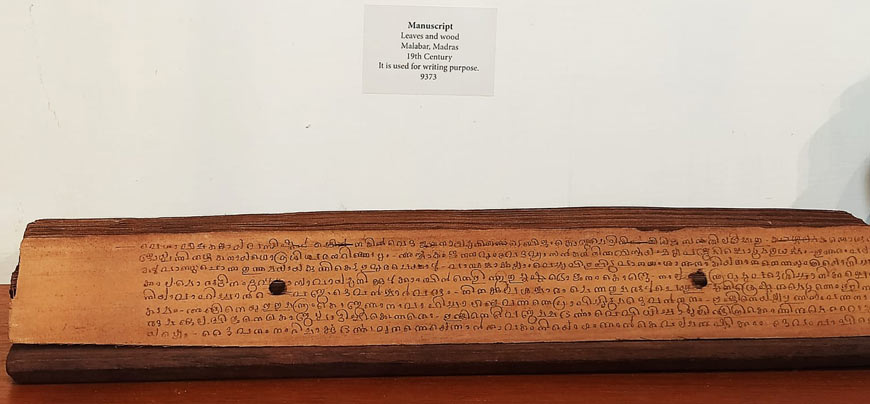 Manuscript on leaves, Malabar,Madras, 19th-century
Manuscript on leaves, Malabar,Madras, 19th-century
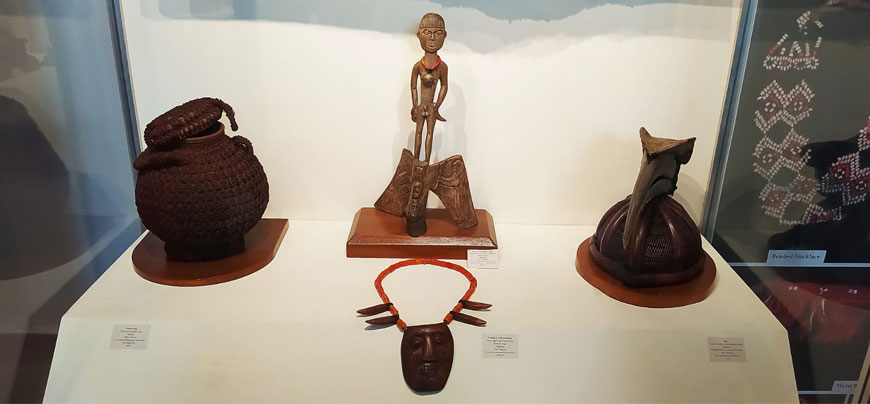 Bone art work of the Konyak Naga community
Bone art work of the Konyak Naga community
Also read : Magic of Kolkata’s Jadughar
Meanwhile, William Claxton Peppe, a British colonial engineer and landowner, of Birdpor estate, initiated an excavation at a mound near the village of Piprahwa, and discovered a massive sandstone coffer in 1898, that yielded three soapstone caskets and a crystal casket in the shape of a hollow fish. One of the relic caskets was inscribed in Brahmi script, that read, "Sukiti bhatinam sabhaginikanami sa-putadalanamiyam salila-nidhane Budhasa bhagavate sakiyanam" which has been translated as "This is a deposit of the relics of the Buddha, the august one, is that of the Sakyas, the brethren of the distinguished one, in association with their sisters, children and wives.”
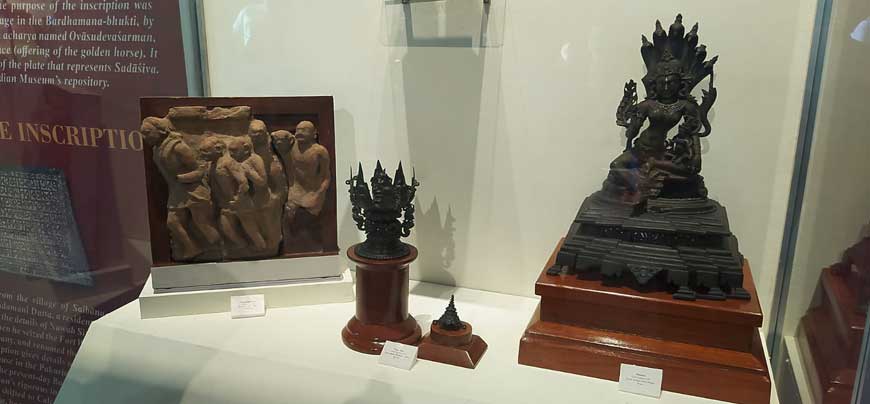 Goddess Manasha of Sena period
Goddess Manasha of Sena period
On display is an exquisite brass sculpture of Goddess Manasă of the Sena period that was found in North Bengal. The two-armed serpent Goddess is seated in Lalitasana with her child on a double-petalled lotus, placed on a pancharatha pedestal, holding a leafy branch in her right hand, while her left-hand holds a snake. A seven hooded snake is represented behind her head. This sculpture is very unique for its stylistic character and has travelled to different continents outside Asia for exhibitions. Then there is the Emerald Wine-Cup and Bow Ring made of emerald, the Goblet held wine for Mughal emperor Shahjahan, who ascended the throne in 1627 CE. The container is donned with gold and encrusted with rubies around the mouth, on the handles, and on the base. When noticed closely, one can spot an image of a lotus near the base, which gives the illusion of the flower inside the body of the goblet.
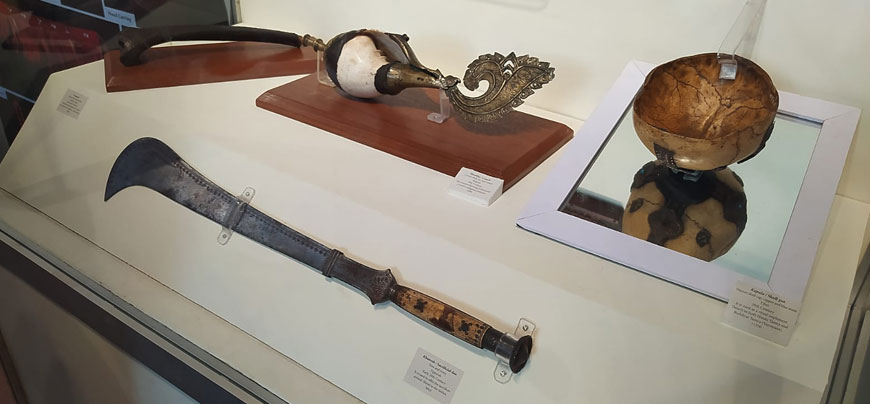 Kapala Skull pot used by tantrik
Kapala Skull pot used by tantrik
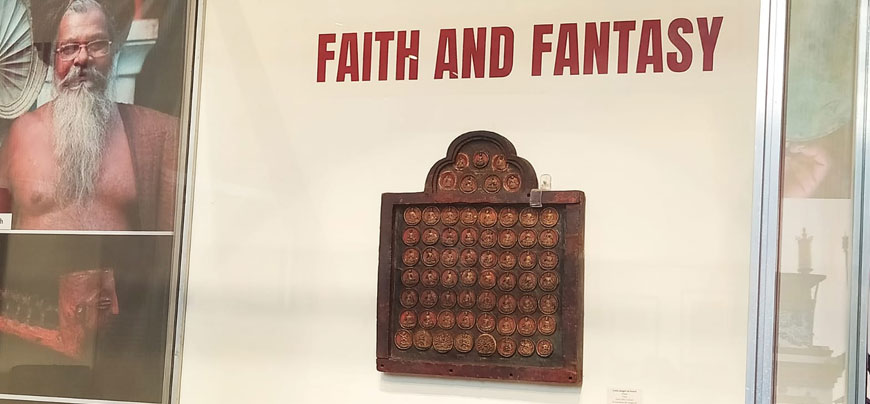 Tantrik instument
Tantrik instument
Historical records convey that, along with Kohinoor these emerald artefacts were taken by Nadir Shah, and consequently Ahmad Shah Durrani received these items after Nadir Shah in 1747 CE. After the Second Anglo-Sikh War (1849), Maharaja Ranjit Singh received these two gems from Shah-Supar, grandson of Ahmad Shah Durrani. Later Lord Dalhousie purchased both the emerald objects and in 1921, they were finally handed over to the Archaeological Survey, for proper preservation. The Kapala/Skull Pot was a major attraction in the display. The Tibetan skull pot, dated 20th century CE, was probably used in both Hindu and Buddhist tantric ritual. The human-skull is designed on a copper stand with four arms having floral design and studded with domes.
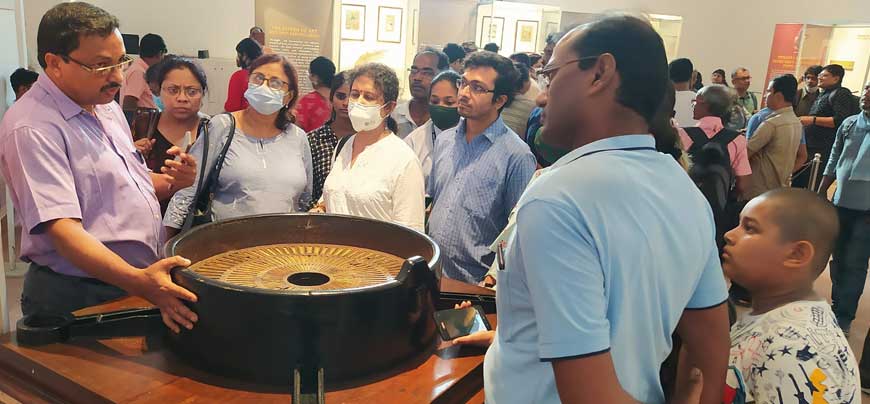 Dokhma The Tower of Silence
Dokhma The Tower of Silence
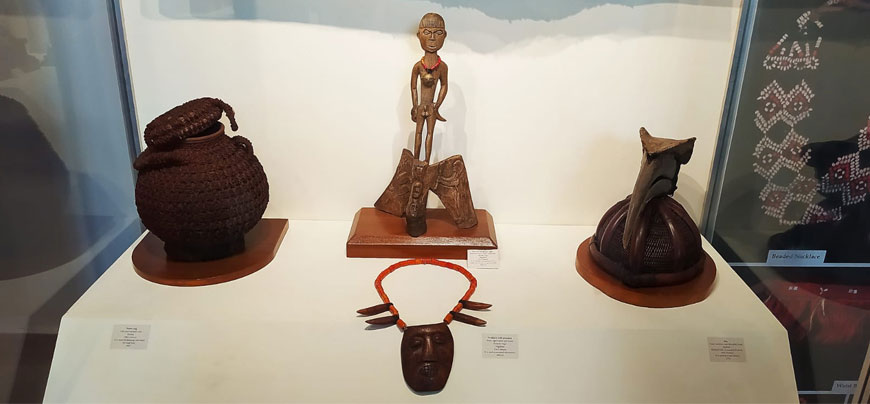 Bone art work of the Konyak Naga community
Bone art work of the Konyak Naga community
The rare treasures from the Art Section included exclusive paintings like the famous Shakuntala in monochrome by Abanindranath Tagore, the father of Bengal School of Art. The decorative art objects celebrate the deep cultural relationship between India and Burma, presently known a Myanmar. The silver filigree work of Manipur, a state which is geographically in close proximity to Myanmar (Burma) caught attention. In the pre-machine age, the silver ingots were beaten and elongated into long wires by passing it through a steel plate with apertures of different gauges. The Pan Daan (Goki) is an exquisite example of premier craftsmanship of its creator.
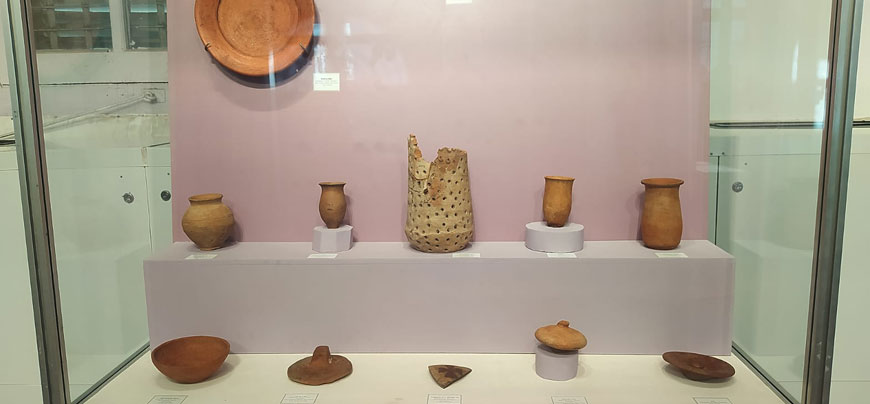 Harappan pottery
Harappan pottery
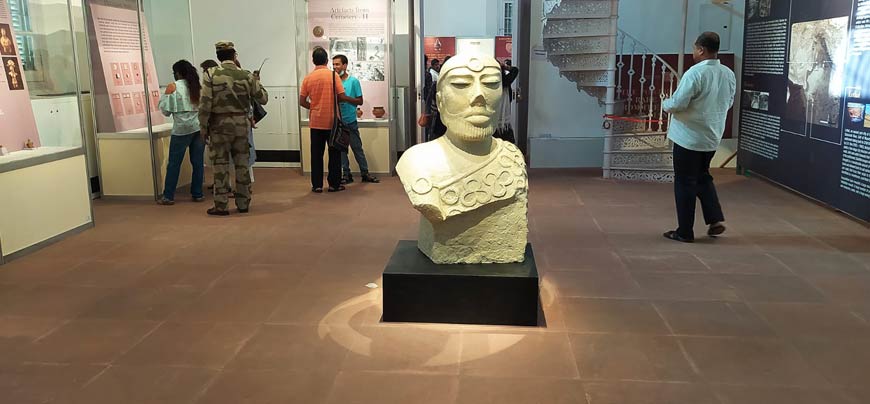 Harappan Priest King
Harappan Priest King
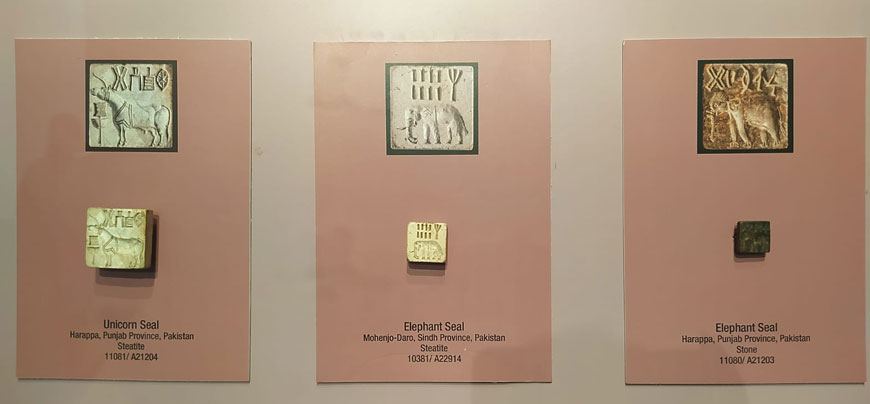 Harappan Seals
Harappan Seals
Through the artefacts and paintings displayed at the Indian Museum, the Power of Museum was celebrated. There was also a panel discussion that included stalwarts in the field like Dr. Dhriti Banerjee, Director, Zoological Survey of India, Shri Indranil Sanyal, Director, North East Zone, NCSM, Shri Sujoy Prasad Chatterjee, Eminent Artist, and Ms. Charlotte Gorant, Fellow Research Scholar, American Institute of Indian Studies, Columbia University The discussion was moderated by Smt. Sumona Chakravarti, Deputy Director, Museums at DAG on May 18, 2022 at the ABC auditorium of the Indian Museum.







